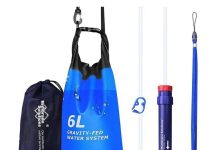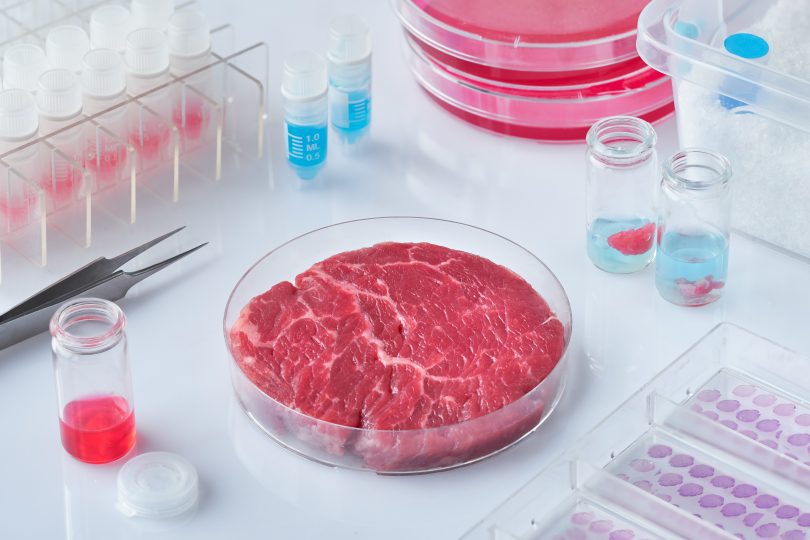Consumers worldwide are seeking to eat natural foods instead of processed ones, and this clean label showcases the growing demand for naturalness and transparency in the foods they consume. When shopping for food, many customers check for natural ingredients and prioritize tasty, nutritious, and affordable foods. In this landscape where conscious eating has become the new trend, food quality control is more critical than ever, as issues with quality can lead to unhappy customers, thus causing your business to lose profits.
Simply put, food quality control comprises a set of measures, guidelines, and procedures that businesses in the food industry must implement to ensure that their products comply with established quality and safety standards. They encompass careful raw materials inspection, monitoring and controlling the production processes, and meticulous testing of the finished product. To this end, companies in the food industry are looking for robust testing methods to meet consumers’ expectations. One method that has been used extensively over the past years is near-infrared spectroscopy, which uses a NIR spectrometer to examine the food, requiring very little sample preparation. This method is convenient and cost-effective, making it easy to implement for a food business that wants to stay on top of the latest food demands.
Maintaining quality control reduces risks and helps you avoid foodborne illnesses, keeping consumers satisfied with your business’s products. Maintaining credibility is paramount when operating in the food business, and the best way to do so is to prioritize consumer safety.
What are the characteristics of a food quality control system?
Ensuring quality in the food industry isn’t a step that’s taken only during the production step. Instead, it should be a part of the entire process, from development to distribution. High-quality products are created by relying on carefully designed procedures and considering possible issues at the production stage. To ensure that the developed products meet quality standards, both active and reactive methods can be used:
- Proactive quality control measures. This food quality measure prevents production anomalies, and its coverage includes machine and equipment inspections, sign-off work instructions, worker retraining, and regular tool checking.
- Reactive quality control measures. Since defects can happen on any production line, businesses must identify and correct them before they can lead to customer complaints or damage the product in the long run. This can involve performing an audit regularly, maintaining updated customer feedback records, and having a system that tracks the defects and corrects them.
In what areas of the food manufacturing process can quality control procedures be implemented?
As mentioned earlier, quality control is about implementing a set of checks to ensure a smooth process and keep customers satisfied. The food industry faces challenges when it comes to meeting consumers’ expectations, so businesses must address them effectively and look for ways to improve the testing process as much as possible. This is why many food business owners are taking advantage of spectroscopy techniques to meet safety and quality standards, collaborating with an experienced innovator such as Avantes, who provides the ultimate customer-oriented optical solutions, ensuring all the requirements will be fulfilled. In what follows, we will take a look at some areas where your food business can implement quality control procedures:
- Ingredient specifications. The quality of a food product’s ingredients will play a role in the overall quality of the finished product. Ingredient specifications offer information about the product’s ingredients, ensuring that a supplier offers top-notch quality. These specifications include the ingredient’s name, the ingredient’s source, the product’s description (its physical and chemical composition), delivery and storage requirements, as well as restrictions on the ingredient’s use.
- Approved list of suppliers. This list comprises the suppliers approved to provide raw materials or ingredients to the food manufacturer, who should meet regulatory requirements and increase the likelihood that the finished products are high-quality.
- Incoming goods inspection refers to inspecting raw materials once they get to the manufacturing site by testing different properties of the ingredient, such as its pH level and appearance, among other things. Suppose an ingredient doesn’t meet the specifications; in this case, it’s paramount to quarantine it and send it back to the supplier (and in such a case, the supplier would also be removed from the supplier list).
- Product formulation. A set of production instructions is required so that the product can be formulated, including the product’s name, the list of ingredients, the product weight, its batch size, and the process time. Businesses in the food industry should have these instructions in place as this will ensure that those participating in the production process follow the same process.
- Manufacturing procedures. These instructions are meant to ensure that foods are created to a consistently high standard, no matter who produces them, and they should include the environmental requirements for the facility, techniques for combining ingredients, the equipment and tool specifications, how ingredients and final products can be transported and stored, and quality control checks for the entire production process.
- Product standards refer to the accepted limits for a product that the manufacturer establishes for a number of sensory qualities, such as size, weight, color, scent, shape, taste, and texture, offering a specific description of the final product.
- Recall procedures. Food manufacturers should implement a food recall procedure, as this will benefit them in case a product defect is acknowledged after the distribution process, helping protect customers from further harm. Manufacturers must have traceability records in place, which will help them ensure that a food product recall is implemented successfully and allow them to identify accurately what products are affected.
The bottom line
Nowadays, consumers are more conscious than ever about what they eat, so food businesses must prioritize food quality at all levels of the production process, identifying and mitigating issues before they can negatively impact the final product. This helps ensure excellence, increases customer trust and satisfaction, and allows businesses to build a reputation for quality, which is imperative for success in today’s food market.









































